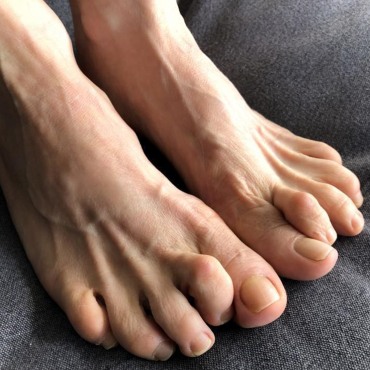
Foot and Ankle Disorders Treatments
- Achilles tendon rupture
- Ankle ligament tear
- Heel pain/ heel spur
- Bunion (hallux valgus)
- Flat foot
- Hammer toes
- Ankle osteoarthritis
- Fractures around Foot & ankle
Achilles tendon rupture
The Achilles tendon is a cord-like band that connects the muscles of your lower leg (calf) to your heel. Achilles tendon facilitates walking by helping to raise the heel off the ground. Achilles tendon tear happens from a sudden stretching of the tendon or a direct hit onto the tendon. Patient will experience difficulty or weakness in heel raising.

Non-operative treatment involves keeping the ankle in rigid immobilisation in a cast or functional bracing to keep two torn ends together to assist healing. Surgical management depends on the stump and gap length of the rupture. Different surgical options involves direct repair, v-y advancement, gastrocnemius fascial turndown flap, or flexor halluces longus tendon transfer.
Ankle ligament tear

Ligaments are strong, fibrous tissues that connect bones to other bones across the joint. They provide stability to the joint. Ankle joint has multiple ligaments. The severity of ligament injury can range minor sprains to complete tears. Complete tears of the ligament cause unstable ankle. The cause for ligament tear is twisting injury to the foot or ankle. Symptoms include swelling and painful ankle joint. Treatment- Most ankle sprains can be treated without surgery. Even a complete ligament tear (Grade 3) will heal without surgical repair if it is immobilized and rehabilitated appropriately. Surgery is reserved for injuries that fail to respond to nonsurgical treatment, and for patients who experience persistent ankle instability and pain after months of rehabilitation and nonsurgical treatment.
Heel pain/ heel spur

A heel spur is a calcium deposit causing a bony protrusion on the underside of the heel bone. Heel spurs are often caused by strains on foot muscles and ligaments, stretching of the plantar fascia.Although heel spurs are often painless, they can cause heel pain. They are frequently associated with plantar fasciitis, a painful inflammation of the fibrous band of connective tissue (plantar fascia).
Non-surgical treatments for heel spurs include stretching exercises, shoe modifications, taping or strapping to rest stressed muscles and tendons, shoe inserts or orthotic devices, physiotherapy and nights splints. In some cases, injection with a corticosteroid may be done to relieve inflammation in the area. If conservative treatment fails to treat symptoms of heel spurs after a period of 9 to 12 months, surgery may be necessary to relieve pain and restore mobility. Surgical techniques include release of the plantar fascia or removal of the spur.
Bunion (hallux valgus)

Hallux valgus manifests with the proximal phalanx deviating laterally and the first metatarsal head deviating medially. It tends to occur more commonly in women than in men and occurs more in those who wear tight shoes or heels. Patients typically present with a chronic onset of sharp or deep pain at the MTP joint that is exacerbated by ambulation. Non-operative treatment include shoe modification, orthosis, analgesics, ice pack therapy, medial bunion pads and stretching. When not
responding to conservative treatment, surgery is advised which involves osteotomy, arthroplasty, arthrodesis and soft tissue procedures.
Flat foot

Adult acquired flatfoot (AAFD), first described as posterior tibial tendon dysfunction (PTTD), is a complex pathology defined by the collapse of the medial longitudinal arch of the foot with continued progressive deformity of the foot and ankle. Flat foot is a multifactorial process involving PTTD due to obesity, relative hypovascularity of the tendon, previous trauma, corticosteroid injection, neuromuscular conditions, and diabetes. First line treatment/ conservative treatment involves orthotic devices, such as low-articulating ankle-foot orthosis, cast-boot walkers, and other ankle-foot orthoses in conjunction with NSAID therapy and physical therapy. Surgical treatment is based on the degree and extent of deformity which involves posterior tibial tendon tenosynovectomy, debridement or FDL tendon autograft in mild cases. In later stages osteotomy, arthrodesis and ankle replacement +/- deltoid repair is done.
Hammer toes

Hammer toe and mallet toe are foot problems that cause a bend in a toe or toes. Wearing shoes that don’t fit well can cause hammertoe and mallet toe. Other causes are foot injury and certain illnesses, such as diabetes or imbalance in the toe muscles. Symptom include pain from wearing shoes, difficulty moving the affected toe, toe stiffness, callus or corn formation due to rubbing against shoes or against the ground. For toes that can still unbend, roomier footwear and shoe inserts, called orthotics, or pads might give relief. If these treatments don’t help, surgery is advised. The surgery can release the tendon that’s keeping the toe curled up. Sometimes, the surgeon also removes a piece of bone to straighten the toe.
Ankle osteoarthritis
There are 2 types of osteoarthritis: primary (unknown cause) and secondary. Compared with the knee and hip joints, there is a substantially lower rate of primary ankle OA due to unique anatomic, biomechanical and cartilage characteristics of the ankle. Secondary ankle OA can be caused by old trauma, metabolic disease, congenital malformations. Symptoms include slow and progressive pain,
aggravated on exertion and relieved on rest. Non-surgical management include anti-inflammatory medications, intraarticular injection of corticosteroids, hyaluronic acid. Non responding patients can
be advised for surgical treatment in the form of arthroscopic debridement, fusion of the joint (arthrodesis) or replacement of the joint.
Fractures around Foot & ankle
Fractures around the foot and ankle are common injuries that can result from falls, sports, or accidents. These fractures involve the bones of the foot, such as the metatarsals, or the bones of the ankle, like the tibia and fibula. Symptoms include pain, swelling, bruising, and difficulty walking. Treatment varies based on the severity and location of the fracture, ranging from rest and immobilization with a cast or boot to surgical intervention. Prompt medical attention is crucial for proper healing and to prevent complications. Rehabilitation exercises and physical therapy may also be needed for a full recovery.

